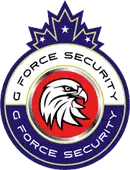Understanding Canadian Privacy Laws for CCTV Monitoring
In the digital age, privacy and surveillance have become issues of paramount concern. However In Canada, CCTV monitoring services must comply with the country’s privacy laws to protect the rights and privacy of individuals.
Privacy laws play a vital role in regulating CCTV monitoring, balancing safety and personal rights. In this article, G Force ll explore these laws, providing a clear understanding (with real life examples) of how they impact our surroundings and how to implement CCTV cameras in a legit way .
Privacy Laws in Canada
In Canada, privacy rules are overseen by laws at both national and provincial levels. Stating the CCTV monitoring systems, the Privacy Act and the Personal Information Protection and Electronic Documents Act (PIPEDA) become of paramount importance.
- The Privacy Act focuses on how the federal government manages personal information, and PIPEDA outlines rules for businesses on collecting, using, and sharing personal information in their commercial activities.
- For businesses and organizations outside the federal realm. The legality of CCTV systems is governed by the corresponding provincial legislation. In Québec, for instance, the Act Respecting the Protection of Personal Information in the Private Sector (governing how private sector organizations handle and safeguard personal information) applies.
- In Alberta, Ontario, and British Columbia, the (PIPA) Personal Information Protection set rules for the responsible collection, use, and disclosure of personal information). While privacy laws in each province vary, they all generally focus on the same basic principles of accountability, consent, limited collection, limited use, and safeguards among others.
Understanding CCTV Monitoring Law in Canada Under PIPEDA
PIPEDA sets out a comprehensive framework that provides guidelines for the collection, use, and disclosure of personal information by the private sector.
It covers details about a person that make them identifiable. This definition is broad and includes images from CCTV. So, when it comes to video surveillance, it’s viewed as collecting personal information. To ensure fairness, PIPEDA lays out principles that must be followed when handling this information.
Monitoring with Consent/Informing
Individuals must be informed about the collection of their personal information (which includes video images) and consent to its collection, use, or disclosure, except in specific circumstances where consent is not required by the Act.
Limited Collection
The collection of personal information must be limited to what is necessary for the purposes identified by the organization. This means that CCTV should only be used if it is necessary for a specific, legitimate purpose.
Data Safety and Access Protocols
Furthermore, organizations must safeguard the information they collect. In the context of CCTV monitoring, this means that the footage must be stored securely and only authorized individuals should have access to it.
Accuracy
It’s crucial to keep personal information accurate, complete, and up-to-date based on why it’s being used. This helps ensure that the information stays relevant and trustworthy for its intended purpose. Regularly updating and checking the details is important to capture any changes, making sure the information remains fitting and useful. This commitment to accuracy is not just about following privacy rules; it’s a key part of handling data responsibly, building trust and integrity in how personal information is managed.
Openness and Transparency
Organizations must be open about their policies and practices with respect to the management of personal information, including the use of CCTV. This could involve signage indicating the presence of CCTV cameras (alerting people that their activities may be recorded for security or surveillance) and the purpose for their use.
Individual Access
Upon request, an individual should be informed of the existence, use, and disclosure of their personal information and be given access to that information. Individuals should be able to challenge the accuracy and completeness of the information and have it amended as appropriate.
Challenging Compliance
Individuals should be able to address a challenge concerning compliance with the above principles to the designated individual or individuals accountable for the organization’s compliance.
CCTV Monitoring: Differences in Canadian Provincial Laws
In provinces that have privacy laws, similar to PIPEDA, such as British Columbia, Alberta, and Québec, the provincial legislation applies. These laws generally align to the principles set out in PIPEDA but may have extra protections or variations.
In Alberta, privacy holds a key role according to the Personal Information Protection Act. For organizations planning to use CCTV, it’s not just about having a good reason; they need to prove it’s appropriate use.
Consent is emphasized more in Quebec, as the Act Respecting the Protection of Personal Information in the Private Sector requires that persons should be informed, and their consent must be obtained before collecting, recording, using or disclosing their personal data. This stringent condition would invariably affect the use of CCTV monitoring systems in public spaces.
Implementing CCTV Monitoring following Canadian Laws: With Examples
In Canada, using CCTV is guided by laws that prioritize privacy and understanding these laws while practically installing the CCTV monitoring system can be daunting, confusing and hard to understand. Below are some examples, simplifying this process in real life scenarios.
Balancing Security and Privacy
Priority is finding a balance between security and individual respect in CCTV usage. it should not damage individual dignity or cause unnecessary harm or embarrassment.
Example: A retail store in Toronto uses CCTV for theft prevention, placing cameras at entrances, exits, and near valuable items. To respect privacy, cameras must be not installed in private areas like restrooms and changing rooms. Hence balancing the need for security with the ethical imperative to respect individual privacy rights.”
Caution with Audio Recording
Use audio recording in CCTV cautiously. Recording conversations without consent is generally not allowed under the Canadian laws.
Example: A convenience store in Toronto, that has installed a CCTV system furnished with audio recording capabilities to enhance its retail security. In Canada, It is not permitted to record private conversations without the consent of the individuals.
The store has to obtain consent by placing noticeable signs at entrances and strategic locations within the store, informing customers & employees that audio is being recorded for security purpose.
Distinguishing Public and Private Spaces
Clearly distinguish between public spaces and private areas in CCTV usage. Exercise extra care in places where people expect complete privacy.
Example: A shopping mall in Brampton install monitoring cameras In the public areas of the mall, like the food court, walkways, and shopping areas, the use of CCTV is generally acceptable.
However, the situation is different in areas where individuals expect a higher degree of privacy. For example, bathrooms, changing rooms, or private offices within the mall are considered private spaces. Installing surveillance systems is not permitted at these locations.
Accessibility Considerations
When setting up CCTV, consider accessibility for people with disabilities. Ensure the system is inclusive and doesn’t create barriers for anyone.
Example: A public library in Ontario must also consider how this system affects all users, including those with disabilities. For instance, the library has monitors, displaying live CCTV footage, used for deterring potential theft or misconduct. In this scenario, the library should ensure that these monitors are placed at heights and locations accessible to individuals in wheelchairs.
Additionally, if the library uses any audio elements with its CCTV system, like announcements or alerts, it should also provide visual alerts or other accommodations for individuals who are deaf or hard of hearing.
Similarly, for any interactive elements associated with the CCTV system, such as help kiosks or complaint registers. The library should ensure these are accessible to people with a range of disabilities, including those with visual impairments or limited mobility.
Read the G-Force Guide >>>>> Choosing & Installing the Best CCTV Camera System
Monitoring the Workplaces in a Transparent Way
In workplaces, transparency about CCTV use is crucial. Employees have the right to know and may need to give consent.
Example: Consider a typical office setting in Canada, employees should be clearly informed about where the cameras are installed, what areas are being monitored, what kind of data is being collected, how long it will be stored, and how it will be used.
For instance, if cameras are installed in common areas like hallways or the reception, employees should be made aware of this. On the other hand, placing cameras in more private areas like break rooms or near workstations might require explicit consent from employees. As these areas might not typically be under surveillance and employees have a reasonable expectation of privacy there.
Moreover, transparency in CCTV usage in the workplace also involves informing employees about their rights regarding surveillance data. This includes whether they have the right to access footage of themselves. Or how they can raise concerns about privacy violations.
Sector and Industry Specific Regulations
In sectors like transportation have to follow additional regulations. Regularly check for compliance with evolving laws.
Example:, Let’s consider the transportation sector, which includes airports, train stations, and public transit systems. In these environments, the use of CCTV is often extensive due to the high security and safety requirements. However, these sectors may be subject to additional regulations that dictate how surveillance can be conducted. These regulations might pertain to the specific placement of cameras. The duration for which footage can be stored, or how the footage can be used and shared.
For example, at an airport, CCTV usage is not only for security against criminal activities but also for monitoring operational safety. The regulations governing CCTV use in this setting would be stringent. Ensuring both the protection of sensitive areas and the privacy of travelers. The airport authorities would need to regularly review and comply with these specific regulations. Which could be different from those applying to other sectors.
Conclusion
Navigating Canadian privacy laws concerning CCTV monitoring necessitates a delicate balance between privacy and security. While surveillance systems can benefit businesses and public safety. It’s crucial for these services to fully comply with the essence and specifics of Canada’s privacy laws.
Contact G-Force Security at (905)-519-0101 or www.gforcesecurity.ca to implement CCTV monitoring in a privacy safe & legit way.
FAQ’s
- Do Canadian privacy laws apply to both public and private CCTV systems?
Yes, Canadian privacy laws apply to both public and private CCTV systems to protect individuals’ privacy rights. - What are the consequences of non-compliance with privacy laws in CCTV monitoring?
Non-compliance can lead to legal actions, fines, and reputational damage for businesses. - How often should businesses conduct Privacy Impact Assessments for CCTV systems?
It’s recommended that businesses conduct Privacy Impact Assessments regularly, especially when implementing new CCTV systems or making significant changes. - How often should businesses conduct Privacy Impact Assessments for CCTV systems?
It’s recommended that businesses conduct Privacy Impact Assessments regularly, especially when implementing new CCTV systems or making significant changes. - Can businesses use CCTV footage for purposes other than security?
Businesses should use CCTV footage strictly for security purposes and adhere to privacy laws when considering other uses. - Are there anticipated changes in Canadian privacy laws for CCTV monitoring in the near future?
The article explores future trends, but specific changes depend on legislative developments. - What if the police or Govt. agencies ask for the footage?
You can provide footage to authorities without a warrant, but it’s your choice. A production order, however, requires compliance. When reporting a crime to the police, sharing relevant footage is encouraged.




